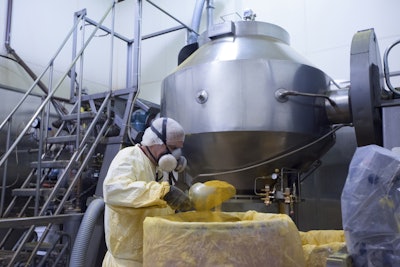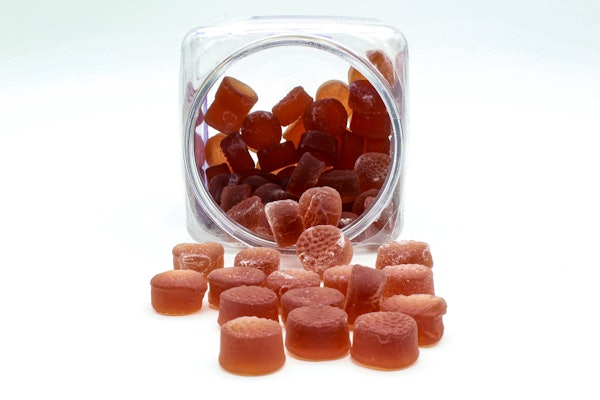
When processing pharmaceutical powders, precise drying is often required for production and quality control. However, traditional equipment such as tray dryers are usually designed to operate for a specified, set time that may not correlate with the actual level of drying required. This lack of precision can lead to over-drying that damages powdered components or under-drying that requires additional processing, and sensitive or volatile powders can be more prone to damage.
Because a tray dryer, for instance, dries material statically from the outside-in without movement, it creates variations in the powdered material. Usually, such variations must be compensated for with extra processing. This typically involves removing the powder and running it through a mill or any number of additional steps, all of which add considerable time and cost to the drying process.
As a solution, drying equipment with sophisticated controls such as advanced vacuum tumble dryers can provide more efficient, consistent drying of sensitive or volatile powders with less time and energy. Vacuum tumble dryers can be used to dry (and also potentially blend) loads up to 10,000 kg. The totally enclosed vessels enable better control over the drying process and repeatable low moisture end points while advanced sensors further enhance the precision and speed of powder drying.
We examine the benefits of advanced vacuum tumble dryers with Gregg Muench, Vice President of Development at Gemco, a Middlesex, NJ-based manufacturer of powder processing technology and vacuum tumble dryers/tumble blenders, founded in 1916.
Healthcare Packaging: How efficient or effective can vacuum tumble dryers be compared to traditional equipment?
Gregg Muench: Vacuum tumble dryers can dry up to 10 times faster, use 75% less energy, and be 5 times less expensive to operate than traditional dryers. The efficiency relates to the ability of vacuum tumble dryers to precisely measure, control and adjust factors like temperature, pressure, and humidity in the vessel.
As an example, many industrial powders contain solvents to dissolve or dilute certain
substances, but the solvents must be removed to dry the powders effectively. By adjusting vessel pressure to lower the boiling point of solvents, a vacuum tumble dryer can use significantly less heat to remove solvents, making it the most energy efficient and fastest type of dryer for this purpose.
When damaging free radicals result from certain chemical processes, these also must be removed from powders – and this is also facilitated by the equipment. In some advanced vacuum tumble dryers, gas purging technology (which injects an inert gas under the powder bed) enables processors to safely extract the free radicals from powdered materials as well as mitigate uneven drying, which improves dryer reliability and powder quality.
HCP: What are some of the problems posed by typical drying equipment, such as tray dryer technology?
GM: Common drying equipment such as tray dryer technology (which places layers of wet material on racks of heated trays) typically utilizes only static heat to dry powders. However, this can lead to a number of challenges including uneven drying, trapped volatile materials, and excess heat that can damage sensitive substances.
The first challenge of applying heat alone is that it tends to dry the powder unevenly. As heat is applied, the material that is exposed closest to the surface will inevitably dry faster or crust. Because tray drying, for example, is static it does not provide movement or agitation to lower levels of material on the tray. Heat without movement is similar to baking and can unevenly cook the material, so the powder may require additional processing. Uneven drying can also destroy the powder’s active component chemistries, which can render the rest of the material unusable.
Another issue with relying on heat alone is that volatile materials may be trapped on the bottom layer of powder as a crust forms on the top layer. As the inner materials are insulated from the static atmospheric drying process, they remain unstable. After the drying process is complete, these volatile particles will be exposed to air upon discharge and may oxidize or even potentially cause a deflagration, or sudden rapid burning flame or fire, on contact with atmospheric oxygen.
A third challenge with only applying heat is that the powdered materials often contain solvents or free radicals that need to be removed for adequate drying. While heat is an important component of extracting the free radicals, too much can degrade or destroy heat sensitive materials.
HCP: How can vacuum tumble dryers resolve these sorts of static drying issues?
GM: Some advanced vacuum tumble dryers utilize a gas purge system that provides sparging (gas injection) in addition to heat application. With this approach, a perforated tube is positioned under the bed of material and distributes a flow of inert gas such as nitrogen. This helps to circulate heat evenly amid the powder. The gas bonds with free radicals and percolates to the top, where it is vacuumed out. Because the perforated tube rotates with the vessel during processing, all surfaces of the material are methodically exposed to the gas feed.
Uneven drying is also mitigated by the gas purging process, which directs a flow of nitrogen gas within the vacuum tumble dryer vessel. This essentially “sweeps” solvents or free radicals into the vacuum when the gas is pumped into the void space above the bed of material. The process greatly reduces drying times in products with weakly bonded or unstable chemical properties.
The gas purge also provides an easy solution to oxygen-sensitive or volatile material, which can otherwise be damaged or even pose a fire/burn hazard on contact with oxygen in the air during loading/unloading of the vacuum tumble dryer vessel. When a blanket of inert gas is used to cover the material bed, it provides a protective barrier that prevents the powder from being exposed to atmospheric oxygen. This can help to keep technicians safe when they need access to the vessel through its cover or valve during loading or unloading.
HCP: What role does powder movement play in drying, and how can vacuum tumble dryers help with this?
GM: Powder movement is another critical element that is necessary to eliminate both overheating and burning of particles. Vacuum tumble dryers provide a combination of dynamic macro and micro powder movement that provides superior heat dispersion throughout the material.
While this occurs, micro powder movement (if needed) simultaneously proceeds via agitator blades located in the center of the vessel, where fine processing in the material transpires. This allows for a gentle repeatable pattern that maintains superior heating distribution among the powder’s particles while preserving the product’s physical characteristics.
Together, the constant movement and flow path allow the powder to achieve a consistent drying temperature throughout the entire batch. This helps eliminate cold spots and wet powder. The smooth tumbling lets powder lay on the heated surfaces only long enough to allow heat to transfer to the particles and the gentle product movement eliminates particle degradation as well.



















